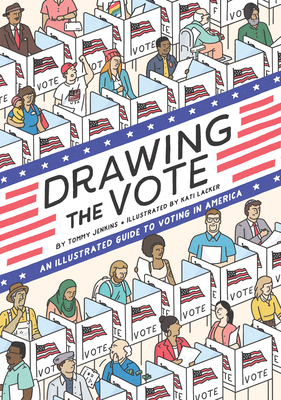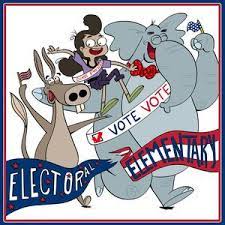Today's Lesson: Voting in America
Looking back on America’s first century, voting rights used to be very limited, mostly to white, land-owning, Christian men. Over time access opened to more groups of people, but even today, one’s right to vote isn’t guaranteed. Voting rights in America continue to be a moral and political issue. And while eligibility to vote is governed and protected by various state and federal laws, efforts to suppress the vote are alive and well. These conversations can be difficult to start, and often are focused on either talking to very young children, or how to educate ourselves as adults. But social justice learning is a life-long journey, and one that is just as important for those in the in between age categories, AKA adolescents. Below you will find educational resources specifically geared toward school-aged children.
Click to return to the main page.
Learning Levels
Early Childhood Adolescent AdultRead
Drawing the Vote

At a time when many citizens are experiencing challenges and apathy about voting and skepticism concerning our bitterly divided government, Drawing the Vote, an original graphic novel, seeks to offer some explanation for how we got here and how every American can take action to make their vote count. Additionally, Stolen Justice: The Struggle for African American Voting Rights provides an incisive examination of the post-Reconstruction era struggle and the suppression of African American voting rights in the United States; and Votes for Women!: American Suffragists and the Battle for the Ballot tells the story of the 19th Amendment and the nearly eighty-year fight for voting rights for women, covering not only the suffragists’ achievements and politics, but also the private journeys that led them to become women’s champions.
EXTRA CREDIT: Examine data about the voting rights laws that most impact Americans' access to the ballot box and how they’ve changed across the country in recent years, in this interactive read from FRONTLINE: Ballot Watch.
Watch
The Ongoing Fight
The right to vote was hard-won -- for African American women in particular, who played a significant, and sometimes overlooked, role in a struggle that cut across both the suffrage and civil rights movements. And they remain at the forefront of the fight to expand access to the ballot today. Learn more in this clip from The Vote from American Experience.
EXTRA CREDIT: Who can vote today looked a lot different from those who could vote when the United States was first founded. This video from GPB Eduction covers the history of voting rights, including women's suffrage, Black disenfranchisement, the Voting Rights Act of 1965, and the various methods American voters can cast their ballots today.
Listen
Electoral Elementary

Electoral Elementary “The Government Doesn’t Do Anything...” bills itself as a civics podcast that teaches through storytelling and song. It opens with a six-part audio drama series following 10-year-old Gloria Martinez as she tries to make change in her elementary school. Gloria learns from a talking civics book about how to maneuver her school’s systems of student government. Along with the drama, there’s a lot of civics vocabulary and context-based discussions about the workings of elections, representative government, debates, and rules. The show features voices from a diverse cast and personalities: a bubbling, bureaucratic principal; an elected bully kid; an old careless crossing guard. There’s a lot to talk about regarding civic behavior and responsibilities.
EXTRA CREDIT: Listen to this story read aloud of Your Vote Counts! by Mary Therese Grabowski.
